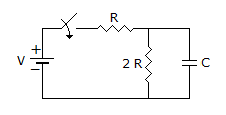Electronics and Communication Engineering - Electronic Devices and Circuits
Exercise : Electronic Devices and Circuits - Section 6
- Electronic Devices and Circuits - Section 14
- Electronic Devices and Circuits - Section 27
- Electronic Devices and Circuits - Section 26
- Electronic Devices and Circuits - Section 25
- Electronic Devices and Circuits - Section 24
- Electronic Devices and Circuits - Section 23
- Electronic Devices and Circuits - Section 22
- Electronic Devices and Circuits - Section 21
- Electronic Devices and Circuits - Section 20
- Electronic Devices and Circuits - Section 19
- Electronic Devices and Circuits - Section 18
- Electronic Devices and Circuits - Section 17
- Electronic Devices and Circuits - Section 16
- Electronic Devices and Circuits - Section 15
- Electronic Devices and Circuits - Section 1
- Electronic Devices and Circuits - Section 13
- Electronic Devices and Circuits - Section 12
- Electronic Devices and Circuits - Section 11
- Electronic Devices and Circuits - Section 10
- Electronic Devices and Circuits - Section 9
- Electronic Devices and Circuits - Section 8
- Electronic Devices and Circuits - Section 7
- Electronic Devices and Circuits - Section 6
- Electronic Devices and Circuits - Section 5
- Electronic Devices and Circuits - Section 4
- Electronic Devices and Circuits - Section 3
- Electronic Devices and Circuits - Section 2
26.
A network has 10 nodes and 17 branches. The number of different node pair are
Answer: Option
Explanation:
One node is reference node. Therefore the system has 9 node pairs.
27.
In a series RC circuit Z = (R2 + ω2C2)0.5.
Answer: Option
Explanation:

28.
The time constant of the network shown in figure is


Answer: Option
Explanation:
Time constant t = C Req
 .
.
29.
If V = 20 + j20, then loge(A) A is
Answer: Option
Explanation:
20 x j 20 = 28.28 Ð45° loge V = loge (28.28) +  = 3.342 j.785.
= 3.342 j.785.
30.
In an ac network the sum of currents entering a node is 10 ∠45°. The sum of currents leaving the node is
Answer: Option
Explanation:
As per KCL sum of currents entering a node is equal to sum of currents leaving a node.
Quick links
Quantitative Aptitude
Verbal (English)
Reasoning
Programming
Interview
Placement Papers

